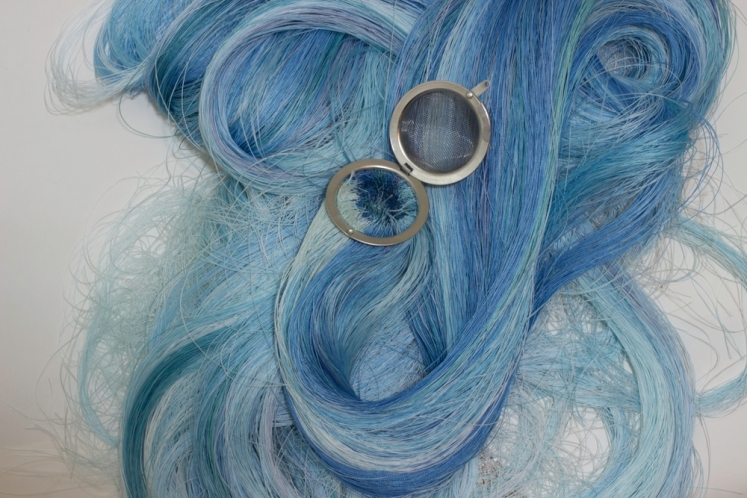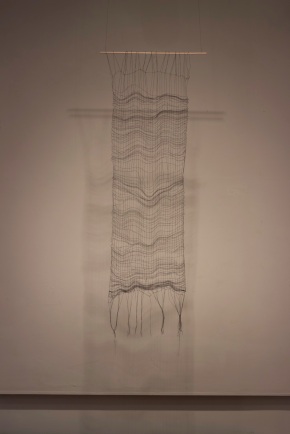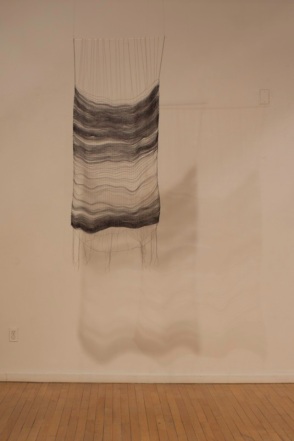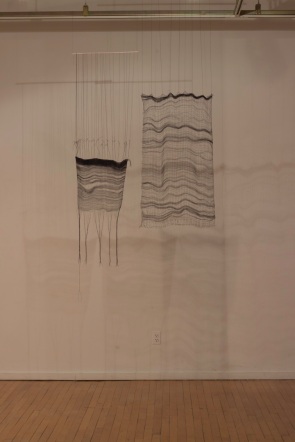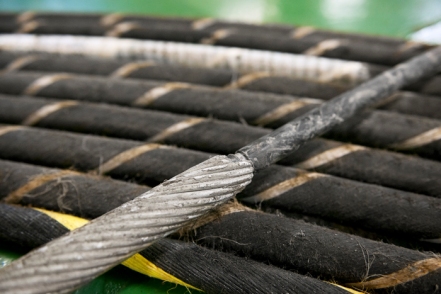When I first started tweeting (this summer), I underestimated Twitter as a medium for finding out all sorts of information and getting exposed to great art and ideas. A few days ago, I encountered the work of Shuli Hallak, and I wanted to share it because I thought it was so provocative and current. Perusing her work today also reminded me of the work of a close friend and fantastic artist, Gayla Martin, who is seemingly at the other end of the spectrum.
A photograph of one of Gayla Martin’s sculptures – used with permission
Fast Company magazine recently featured Shuli Hallak’s work in a piece called “Invisible Networks: One Woman’s Fantastic Quest to Photograph the Living Internet.” There are all sorts of images in on Hallak’s website. She’s photographed all sorts of cables, panels, and electronics which look foreign to the eye, like something out of a sci-fi movie. It is interesting to be able to see the internet, which can feel like a bizarre abstract concept to those who remember life before it began and then became so prevalent. There is so much involved that we don’t see–wireless networks, data storage–the physical part of what connects us “invisibly” to people all over the world.
In the Fast Company interview, Hallak explains that there is a lot at stake when it comes to understanding the concrete dimension of the internet:
“There are a lot of implications. If we know what this stuff looks like, then we can actually speak about it and think about it. It’s not actually very complicated or difficult. We’re visual thinkers. And we can speak about things when we have a visual concept.”
This is certainly true. Language has an intimate connection with thought. This is why expressing ourselves and hearing others’ expressions is so important, for one thing. Through expression we can learn about ourselves and others, and we can evolve and change. By understanding more about how the internet works, we can better understand something that many of us use daily without considering how it works and its physical place in our world. I like that some of Hallak’s photographs show the technology on its own as an alien thing, while some of them integrate technology with people or the environment. Her work asks that question–is technology now a true part of our world? Is there a way in which it is still separate? Can we see it as organic and part of a system which includes humans and the environment?
Shuli Hallak’s “Deep Sea Cable Recovery” – used with permission
Gayla Martin’s work at first seems very different. She mostly works in thread and fabric, but lately has been making prints and paintings as well. She has created organic weavings with variations in line, thickness, and light. She’s created changes in space with large hoops suspended from the ceiling which have a rain of threads (ranging in length from two to ten feet) attached to them. Martin hand dyes the thread and her work exudes personal energy. The everyday materials, including a tea strainer (in the image above), remind one of home, and the processes involved in creating these pieces further add to their human feel.
From Gayla Martin’s “Constructed Impressions” and “Weavings” – used with permission
For me, the common threads (haha–I’m not sorry for the pun, though!) are the way that lines are integral in defining space, as well as making something unseen visible and available for discussion. With Hallak’s work, I see the straight lines of the data storage area and the curves of the cables and the way that space is defined by cables and rectangles. There is an intricate apparatus that Hallak is making visible and available to us through her photography. In Martin’s work, she’s added visual lines to articulate and describe invisible human ties to our surroundings. Sometimes, her work shows our connection to our environment–places we grew up, or places that hold meaning for us. Lines and weaving ask us to think about the very nature of connection: how are we tied to what we see and the people around us? What if these lines are broken? Are the lines even? Is the space around us rigid or fluid?
Both artists’ work, especially seen together, ask us to examine the line between the organic and the artificial. Martin’s work uses organic, everyday use materials like thread, or even a strainer, to show us something unusual about our lives and make us consider them in a new way. She often considers light and shadow, and when you see these pieces in an installation, part of the beauty and the experience is viewing them in context. Hallak’s work shows how artificial objects which are part of advanced technology integrate with organic materials, like the ocean. Hallak’s photographs, like “Multiple Subsea Cables” (below) can also show how these technological materials can imitate the organic: seeing the cables close up, they look like they could almost be vines, and we can see the fraying threads on them that remind us of weavings like the ones that Martin constructs. There is a human element, even in very technological objects that we may imagine to be inhuman and abstract.
Weavings by Gayla Martin – images used with permission
Shuli Hallak’s “Mulitiple Subsea Cables” – used with permission
Both Gayla Martin and Shuli Hallak are exploring important and often abstract aspects of life through their art. What do you think of their work? What does it remind you of?
Special thanks to both Shuli Hallak and Gayla Martin for providing the images including here and giving their permission for their use in this blog post. All images belong to them. Please check out their websites: ShuliHallak.com and GaylaMartin.com; they have much more work than appears here!
 Shuli Hallak – You can also follow her on Twitter: @ShuliHallak
Shuli Hallak – You can also follow her on Twitter: @ShuliHallak
 Gayla Martin – You can also follow her on Twitter: @moxiegm
Gayla Martin – You can also follow her on Twitter: @moxiegm

